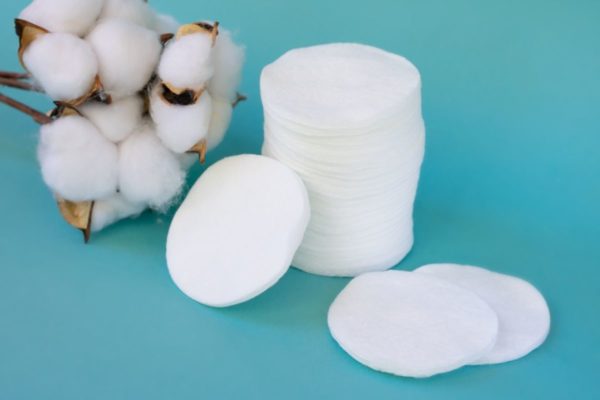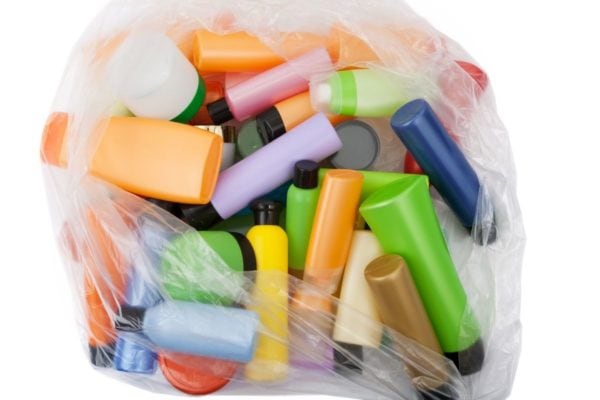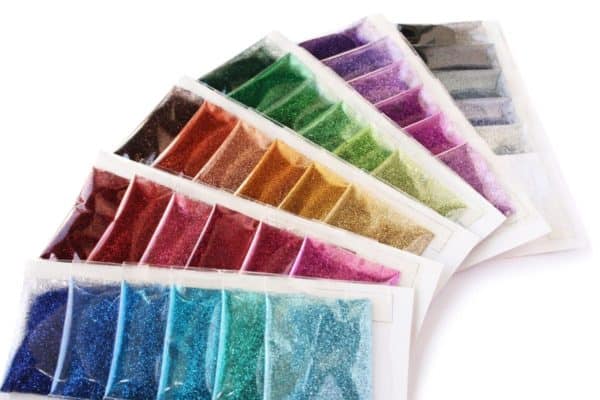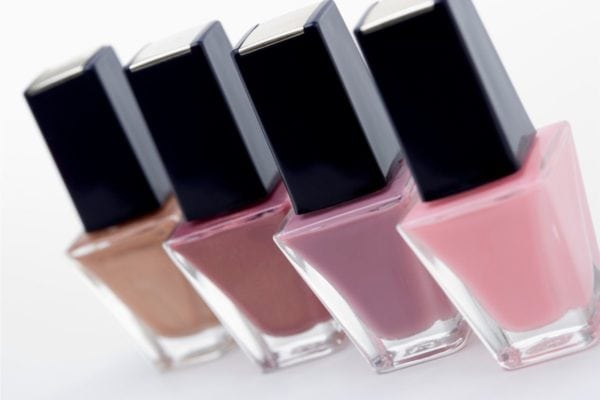What nail products can be recycled?
Recycling is a challenge for small businesses, particularly in terms of getting hold of services or outlets for the small volumes of waste materials that are produced. For beauty and nail professionals, this can prove even more difficult.
While some specialist collection services do exist in some areas for some items, they are not consistent and may prove expensive. Unfortunately, most of the waste our industry produces doesn’t fit into the ‘likely to be collected’ materials. Every local authority and private collection company is different so it is important to get in touch with them. From speaking with various local authorities, private collection companies and sustainability charities, this has been the general outcome. I also discovered, just because we send something to be recycled, it doesn’t mean it is. If the area does not have the facilities to process that item, it will still end up in landfill.
Many products we dispose of in the beauty industry are considered contaminated and therefore not recyclable:
- Tissue/kitchen roll – soaked with monomer or nail products.
- Cotton wool/lint free wipes – soaked with antibacterial spray / IPA, facial or cleansing products. Regular cotton pads don’t biodegrade due to the bleaching and mixing processes used to create them.
- Brushes – with aluminium handles and kolinsky sable or synthetic hair – have been used with nail products.
- Nail files – plastic core and coated in sandpaper – come into contact with the client’s nails.
- Glitter – in contact with nail products and just spilt.
- Dust and product waste from enhancement products.

Unfortunately, in the quantities we recycle, most private companies will not collect these items and local authorities will consider them contaminated as they have come into contact with a customer. They are considered in the same category as nappies, which then goes into the debate of separate collection due to risk. Anything which has come into contact with a customer, has or may have blood/bodily fluids (wax strips etc), acrylic filings, residue, any cardboard or item that is stained/dirty with paint, product or dirt cannot be recycled.
What materials can be recycled?
We must not demonise plastic, as we would be without a career. Did you know that most plastics originate from crude oil? Which is how nail products are also made.
What we can reduce and do to help the environment is cut down on single use and non-recyclable plastics that are not able to be repurposed.
Plastics
It can take up to a thousand years for a piece of plastic to fully degrade. There are eight types of plastic and each needs to be treated differently.

Recyclable plastics
- PET (Polyethylene Terephthalate) is the most commonly used plastic found in items such as water bottles and some of our beauty packaging. Trigger sprays cannot be recycled.
- HDPE (High-Density Polyethylene) is the stiff plastic used to make containers such as bottles and the most likely used plastic for our beauty industry products containers.
- PP (Polypropylene) is often used in cotton wool, wipes and more. Many places now recycle polypropylene to make items like battery cases, brooms and bins.
Non-recyclable plastics
- LDPE (Low-Density Polyethylene) can be found in shrink wraps, squeezable bottles, and plastic wrappers.
- PVC (Polyvinyl Chloride) is the flexible plastic used to make plastic wrap, blister packaging and more. Although it is not recyclable, PVC can be repurposed.
- PS (Polystyrene) is most often used to make Styrofoam and foam packaging.
- The ‘other plastic’ is every other plastic category not listed above. It includes both non-recyclable and ‘biodegradable’ plastics. Polylactic acid (PLA), for example comes under this category of plastic. It is made from plant-starch instead of petroleum, and therefore, marketed as ‘biodegradable.’
- Bioplastic is becoming a popular alternative for single-use plastic items like straws and utensils. Bioplastic simply refers to plastic made from plant or other biological material instead of petroleum. These products, however, are more expensive. When creating the KB Glow for example, it was over double the price to purchase plastic made from recycled materials.

Glitter
While glitter is seen as a ‘must’ for many nail techs and other businesses alike, let’s look at the bigger issue. Most glitter products are made from PET plastic, which contributes to the growing problem of microplastics in the environment. Microplastics are detrimental impact on marine life. Some ‘eco’ glitters, are often plant based but coated in plastic. They are often coated with aluminium for reflectivity and then topped with a thin plastic layer. Another form is mica glitter, which is increasingly used in cosmetics.
How do glitter companies get away with calling a product that’s coated with plastic biodegradable? That’s because terms such as biodegradable and eco are not regulated, resulting in manufacturers putting them on their packaging without any verification.
Tests on ordinary glitter, biodegradable and mica have been carried out with findings that mica glitters caused the same effects to the ecological system as PET glitters. In addition, biodegradable glitter also had a negative effect on the marine food chain.
One of the issues with glitter is that the excess, whether through cosmetics or excess on nails and hands, spilt into towels is washed off in our sinks or laundry and subsequently into the water system. One small step to make a small difference, is look at the way in which we clean up glitter.

Glass
Glass can be recycled indefinitely. Several local authorities confirmed that glass recyclers are mainly looking for glass from food packaging rather than other types of glass and that nail polish bottles and other industry used glasses cannot be recycled.
Furthermore, putting nail polish bottles in your recycling can in fact contaminate the whole contents and make it all redundant for recycling. This is why consumers are often discouraged from placing items like this into recycling.
Louella Belle, has set up recycling scheme, RecycleBelle, which takes empty nail polish, gel-polish and cuticle oil bottles and disposes of them sustainably.

Metal tools
Metal tools are recyclable and would need to be collected by a private company. This may prove costly or difficult if only recycling a small amount. Taking care of your nail tools, following manufacturer’s instructions with use, care and cleaning will help the longevity of your tools, reducing the need to replace. Resharpening and servicing your tools is one of the few types of recycling where you will see a benefit immediately.
Nail files
Nail files are cardboard and sometimes a plastic core coated with sandpaper.
At least one entire football stadium can be filled each year with disposed nail files and it takes years for one to fully decompose in the ground. Local authorities advise these cannot be recycled due to being contaminated.
You can cut your nail files into 2-3 to save waste and money. A win win! Check out this video tutorial on how to do this here.
Metal files are more sustainable because of the lack of trees used in their production and only the sandpaper is disposed of between use. They are also considered more hygienic. However, they take a lot longer than standard nail files to decompose in landfills.
Glass nail files are often considered the most sustainable as they are often made from recycled materials and several factories use lead-free, environmentally safe dyes. They are considered recyclable by some, but majority will consider these contaminated waste.
Bulbs
LED is potentially more than 80% energy efficient than traditional bulbs. This is more positive on the environment and your energy bills.
Only incandescent and halogen bulbs can be disposed of with your regular waste, although some LED’s can be disposed of in this way too. LED bulbs however can often be recycled.
Fluorescent tubes and UV bulbs need to be disposed of correctly, following local authority guidance to have their mercury safely removed and the aluminium and steel separated.
Aluminium Foil
Aluminium foil can be recycled and re-melted infinitely to be made into new aluminium products. However, if it considered contaminated then it cannot be recycled. Cans and aerosols can be recycled. Consider separating your cotton pad from the foil and contacting your disposal or local authority to find out their stance on recycling the foil element.
Paints
These cannot be recycled or put into general waste due to the hazards to the environment. If it is a small amount it can be dried out in the container and go in the general waste.
Wood
This includes items such as orange wood sticks, spatulas etc. If we think to when we use these, we only use ¾ – ½ of the length. If you remove the contaminated part, the remainder can be recycled.
What does biodegradable mean?
To be truly biodegradable, a product must decompose in less than a year, naturally. Interestingly, many biodegradable materials won’t break down quickly or easily naturally. Some still take years but will break down inside the right kind of industrial equipment. This equipment is not easily available all over, so the biodegradable element becomes redundant.
It’s important to know that current biodegradable products can only decompose if they are sent to a special factory, where the temperature and humidity is specially controlled, and grouped together with other compostable plastics. Many of these biodegradable products will not break down in the oceans.
Learn how to make your nail and beauty business more sustainable and eco-friendly, whilst also saving money here.
You don’t have to do everything at once, even making small changes add up and make an impact to help the growing detrimental impact on the environment.
Further reading
- National Geographic
- Local authority – this should provide you with a breakdown of their recycling processes or you can request this.
- www.freecollections.co.uk
- www.recyclenow.com
- www.wrap.org.uk
- www.viridor.co.uk

